While Caraway is far more transparent, Greenpan makes the better cookware. Read on to learn more about the key differences between Caraway and Greenpan.
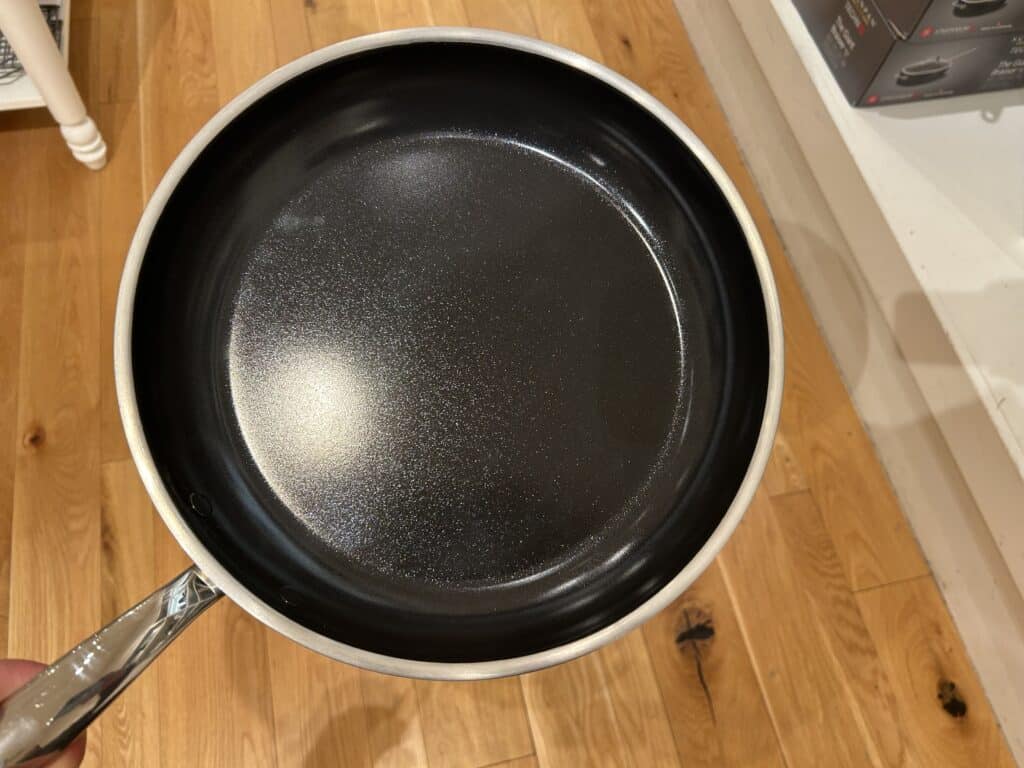
Caraway Home and GreenPan both make non-stick cookware without the standard Teflon (PFAS) coating. Both brands are billed as safer, more sustainable options for the home cook.
Is there any difference between Caraway and GreenPan?
You bet.
For starters, Caraway Home is much more transparent about its testing. And for us, transparency is key for making truly informed, non-toxic choices for the kitchen.
Second, GreenPan is the better constructed product and it’s not close. Their latest 3-ply and 5-ply cookware collections are more robustly built and safer long-term than Caraway Home cookware.
The trouble is, without transparency over test results, we can’t tell for sure.
Head to head
| Caraway Home | GreenPan | |
|---|---|---|
| Materials | Aluminum pan coated with ceramic, stainless steel base for induction compatibility | Aluminum or hard anodized aluminum coated with ceramic, some with stainless steel |
| Handles | Stainless steel, stay-cool | Stainless steel stay-cool (except for Bakelite handles on Rio collection and some wooden handles) |
| Helper handles | Yes | No |
| Non-stick coating | Sol-gel process ceramic | Sol-gel process ceramic |
| Lids | Coated aluminum | Glass or stainless steel |
| Third-party testing available | Yes | No |
| Free from | PFOA, PTFE, other PFAS, hard anodization (and potentially toxic manufacturing byproducts) | Results not available (brand says free of PFAS, PFOA, lead and cadmium) |
| Leach testing results | No lead, cadmium, titanium, or other heavy metal leaching | Results not available (brand says free of heavy metals) |
| Made in | China – likely in BSCI / SMETA certified factories | China |
| Oven safe | Yes, to 550 F | Yes, most collections to 600 F, some to 350 F or 400 F |
| Induction compatible | Yes | Not all collections |
| Dishwasher safe | No | Some collections |
| Color options | 11 for main cookware collection | 12 for Reserve collection |
| Storage solutions | Included with sets, smart design with cupboard door storage for lids | Some stackable collections |
| Price for 8-inch fry pan | $90 | $25-$145 |
| Warranty | 1-year warranty for major damage to the body, handles, lids or functional impairment | 2 yrs for ceramic coating, lifetime for rest of product |
| Packaging | Smart and sustainable | Recycled cardboard, with some single-use plastics |
| Sustainability initiatives | Uses recycled materials and sustainable packaging, offers help finding recycling options | Wastewater treatment on site, factories partially solar-powered, uses minimum 65% recycled aluminum, in-house recycling program! |
What’s the same
Both Caraway and GreenPan market their cookware as non-toxic and non-stick. Both brands offer oven-safe ceramic coated non-stick bakeware and cookware, although the maximum oven temperature varies for GreenPan cookware depending on the collection.
All of Caraway’s cookware is induction compatible, as is most (but not all) GreenPan cookware.
On the face of it, Caraway and GreenPan’s original collection have similar cookware construction, being based on aluminum coated ceramic. However, a closer look reveals some key differences.
Shop LeafScore’s Curated Cookware Collection
Through our online store, LeafScore Essentials, we offer several cookware brands that don’t use PTFE or forever chemicals.
What’s different
Third-party testing availability
Third-party testing is the biggest factor differentiating GreenPan and Caraway Home. Pan construction is the second most significant difference.
Caraway Home voluntarily tests its cookware using third-party laboratories and makes these test results available on request. It also runs tests for PTFE, lead and cadmium in the actual surface coating material, in addition to doing leach testing for these and other toxic metals and materials.
In contrast, GreenPan doesn’t make any of its testing publicly available. So, we have no idea if it runs such rigorous tests on the ceramic coatings. For a while, before the end of 2020, GreenPan did make its Prop 65 leach testing available. For the past three years, there’s been far less transparency from the cookware company. For a company set up to be an antidote to PTFE non-stick cookware, we’d expect better.
We suspect, but don’t know for sure, that both GreenPan and Caraway Home use ceramic coating consisting largely of silicon dioxide. We also suspect that GreenPan uses titanium dioxide nanoparticles to make its sol-gel. In contrast, third-party tests show no titanium leaching from Caraway Home cookware, and the company is explicit in its claims that its coating is free of toxic heavy metals.
Pan construction
Caraway Home cookware comprises ceramic coated aluminum with a steel base for induction compatibility. GreenPan has a range of different cookware collections but its original is very similar to Caraway’s.
More recent GreenPan collections feature either hard-anodized aluminum coated in ceramic or 3-ply or 5-ply stainless steel with ceramic coating. They also feature forged bases rather than welded bases.
All in all GreenPan cookware may be stronger, more resistant to warping, and more durable overall than Caraway Home cookware.
Stovetop compatibility
Some, but not all, GreenPan cookware is induction compatible. In contrast, all Caraway Home cookware should work with induction stovetops, although the company notes that some induction cooktops can be finicky and may not recognize its pots and pans. Your induction cooktop will need an 8-inch and a 6-inch burner for the Caraway cookware (5.5-inch Sauce Pan, 6-inch Fry Pan, 6.5-inch Dutch Oven, and 8-inch Sauté Pan) to work.
If you love cooking with induction, then, GreenPan could be your better option overall. The company makes pots and pans with a patented thick base with copper-reinforced ferromagnetic particles. This design may mean that its pots and pans perform better on induction than Caraway Home.
Oven temperature
All Caraway Home cookware is oven safe to 550 F.
GreenPan’s newer collections are all oven safe to 600 F. Its original Rio collection is only oven safe to 350 F, however.
In addition, some GreenPan cookware has wooden handles or other parts that aren’t oven-safe at all. Be sure to check all the product details before buying something you plan to transfer from stovetop to oven.
Durability
GreenPan claims that its newer coatings are scratch resistant and much more durable than other ceramic coatings. It even goes as far as saying that you can use metal utensils with its Infinite8 and Thermolon Advanced coated pans, and that they’re dishwasher safe.
While this sounds good, the reality is that all ceramic coatings will always scratch and chip away eventually. Some formulations may buy you another six months or a year, but no pans of this type will ever be heirloom items you can pass down to your kids or grandkids.
That said, Caraway Home cookware is not dishwasher safe and you definitely don’t want to use metal utensils on the ceramic surface (or let your dog lick the pans clean). So, if you have teenagers in the home or less careful cooks, GreenPan may be the better option overall, especially if you’re also on a tighter budget. The 3-ply and 5-ply collections from GreenPan also pose no risk of aluminum leaching once the ceramic coating wears away, unlike with Caraway’s cookware.
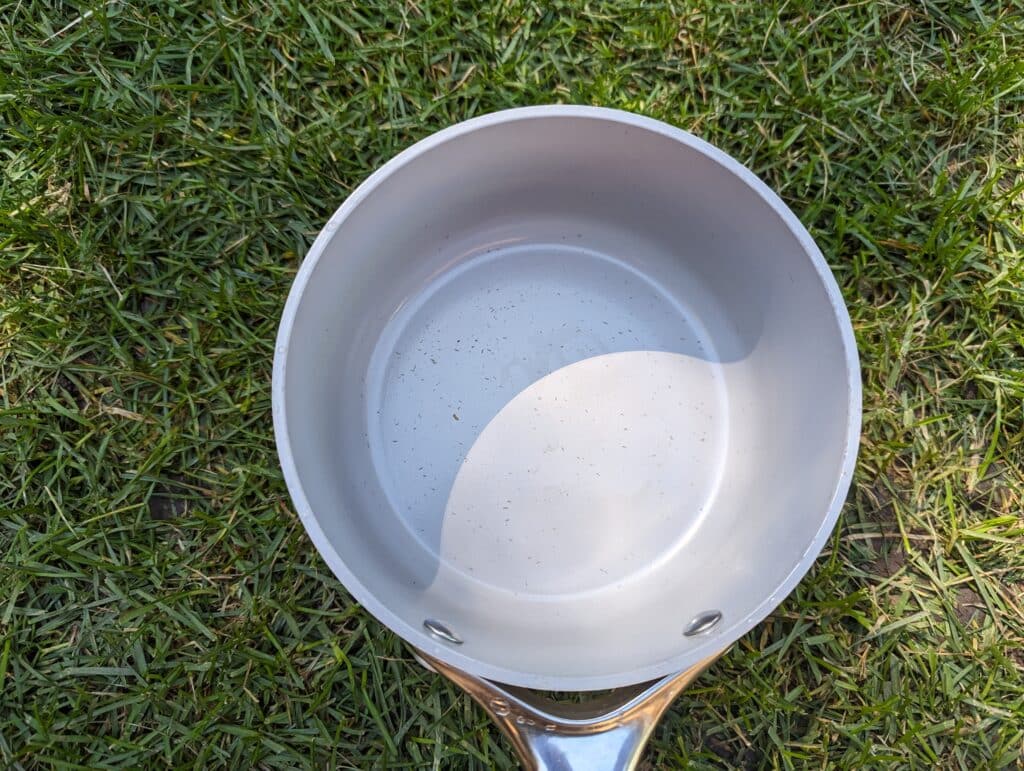
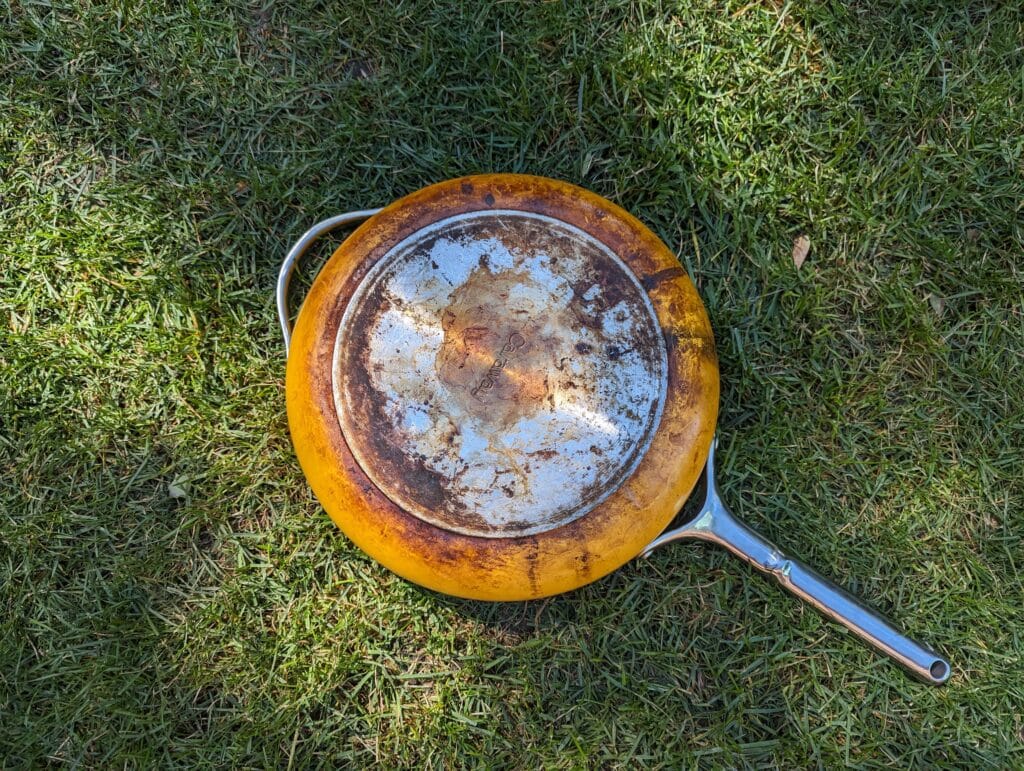
Sustainability
GreenPan initially made our cut for non-toxic, non-stick cookware in part because of the company’s more sustainable approach. The company was set up, after all, to offer an alternative to PTFE non-stick cookware made with forever chemicals.
Nowadays, GreenPan still only offers cookware made without forever chemicals. It’s latest collections are also robustly built using smart 3-ply or 5-ply design where layers of stainless steel encompass an aluminum core. This makes for fast, even heating and good heat retention, as well as resistance to warping, making for a more sustainable product overall.
GreenPan also wins sustainability points because it;
- Runs its own wastewater treatment and recycling system at its factories
- Has solar panels on its factory roof to provide approximately 18% of its power needs
- Uses a minimum of 65% recycled aluminum for the body of pans and pots
- Uses recycled cardboard for packaging
- Has its own cookware recycling program where you pay a $20 flat fee to send back all the cookware you can in your GreenPan box.
Caraway Home doesn’t have quite as many sustainability initiatives, but is also a much smaller company that’s been around for less time. Caraway does use entirely reusable and recyclable packaging, however. It also offers help finding a recycling depot or donation center close to where you live.
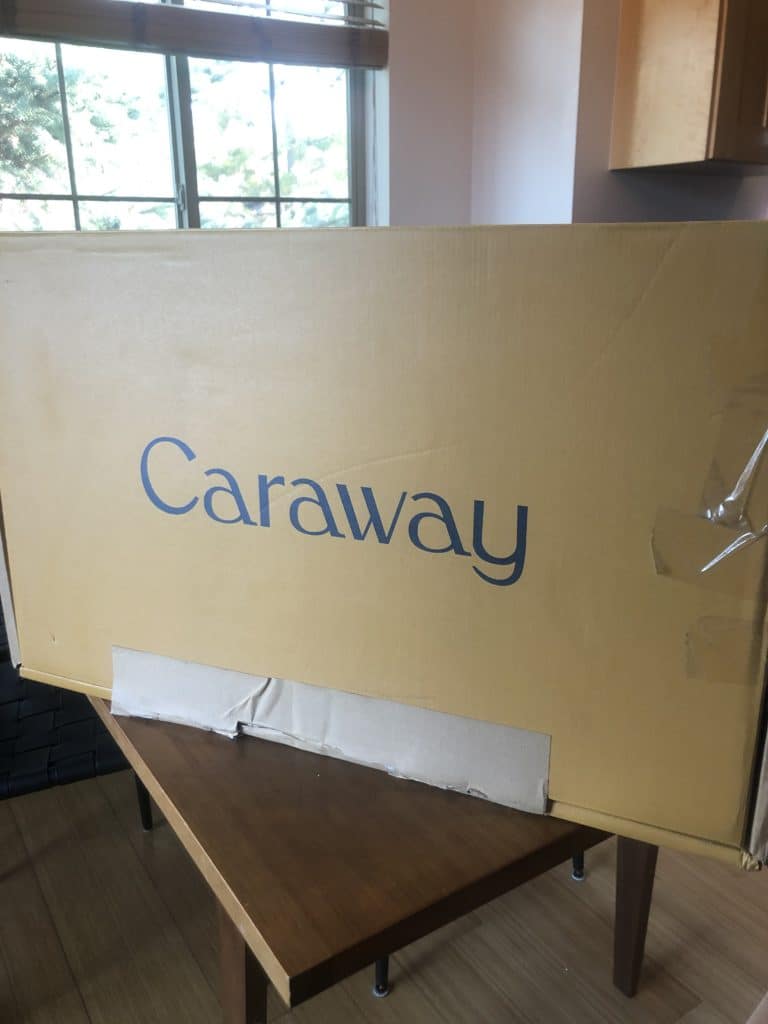
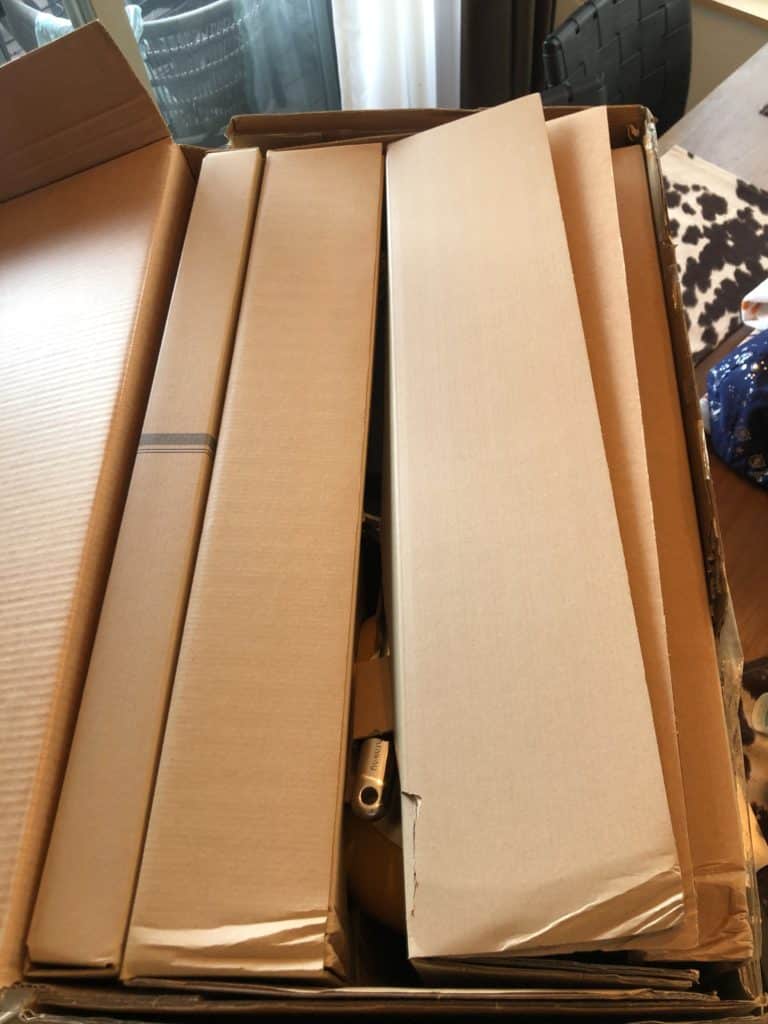
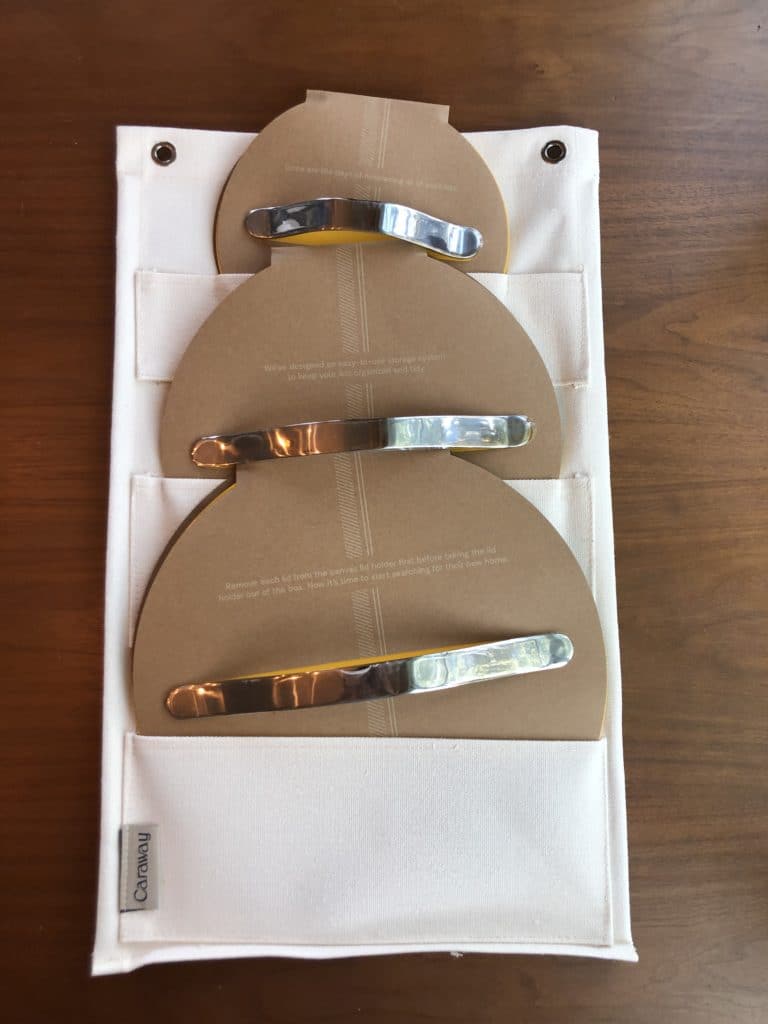
Testing vs. durability
Caraway Home is very responsive and largely transparent when we’ve asked about third-party testing of its cookware. The company has given us a whole slew of test reports and all show the cookware passes with flying colors: No PFAS, and no heavy metal leaching, as well as no heavy metals in the actual coating.
In contrast, GreenPan stopped providing any test results publicly in 2020 and is very secretive about its non-stick coating. Though the company still markets itself as non-toxic and free from heavy metals and PFAS.
Our trust in GreenPan was also eroded when the company settled out of court a class action lawsuit brought in 2019. This lawsuit alleged that GreenPan used misleading marketing practices in claiming its Thermolon coating is non-toxic. The suit included test results that seem to show Thermolon to contain several undesirable chemicals, including silane, aluminum oxide, tetraethoxysilane, methyltrimethoxysilane, and potassium titanate.
Because GreenPan settled the suit privately, the claims were not tested in a court, meaning we still don’t know if the ceramic coating does in fact contain those (or other) chemicals of concern. See more about our take on GreenPan here.
Final thoughts
The choice between Caraway Home and GreenPan is tricky indeed. On one hand, GreenPan offers a much bigger range of products and tends to cost less than Caraway’s cookware, and their pans are much better made. It may also be better for induction, a lot more durable, and less susceptible to damage from the dishwasher and metal utensils, depending on which cookware you choose.
On the other hand, while Caraway Home is upfront about its test results, GreenPan has a reputation for secrecy and for greenwashing.
Both cookware brands do appear to be entirely free of PTFE, however, as well as free from other PFAS.
The choice between Caraway and GreenPan may depend on:
- How you cook
- Your budget
- Color preferences and aesthetics
- Concern over testing
- Concern over storage
- Focus on sustainable packaging.
In general, despite all the hyperbole and fancy marketing, there’s not a lot of difference between most ceramic coated cookware brands in terms of longevity and non-stickiness. Most pans will lose their non-stickability within a year or so. And, at best, most such pans will only last a handful of years before they develop too much surface damage and need replacing. This means none of them are actually sustainable compared to good old cast iron or stainless steel.
If you really have your heart set on non-toxic, non-stick cookware, my vote is for Caraway Home versus GreenPan, based on the company’s overall approach to sustainability and transparency. Should GreenPan start revealing third-party test results again, though, with more comprehensive transparency, that may well change, so stay tuned!
Shop LeafScore’s Curated Cookware Collection
Through our online store, LeafScore Essentials, we offer several cookware brands that don’t use PTFE or forever chemicals.